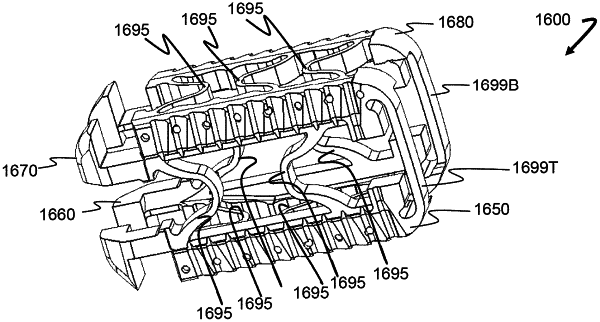| CPC A61F 2/4455 (2013.01) [A61F 2/442 (2013.01); A61F 2/446 (2013.01); A61F 2/447 (2013.01); A61F 2/4465 (2013.01); A61F 2/4611 (2013.01); A61F 2002/30515 (2013.01); A61F 2002/30556 (2013.01); A61F 2002/30579 (2013.01); A61F 2002/30593 (2013.01); A61F 2002/4627 (2013.01)] | 16 Claims |

|
1. An intervertebral scaffolding system, comprising:
an expandable frame dimensioned to be inserted into an intervertebral space of a mammalian spine and configured to expand in vivo between a collapsed state and an expanded state, the frame comprising a first top beam, a first bottom beam, a second top beam, a second bottom beam;
a stabilizer configured for retaining the first top beam, the first bottom beam, the second top beam, or the second bottom beam from a lateral movement that exceeds the expanded state, the stabilizer having first and second retaining surfaces positioned opposite and facing one another such that the first retaining surface is configured to engage with the first top beam and the first bottom beam, and the second retaining surface is configured to engage with the second top beam and the second bottom beam, the stabilizer further including a locking element; and
an expansion member configured for in vivo introduction into the expandable frame to cause the expandable frame to transition from the collapsed state to the expanded state within the intervertebral space, the expansion member configured to engage the locking element, the expansion member having a first portion and a second portion that are displaceable relative to one another for engaging with the locking element.
|